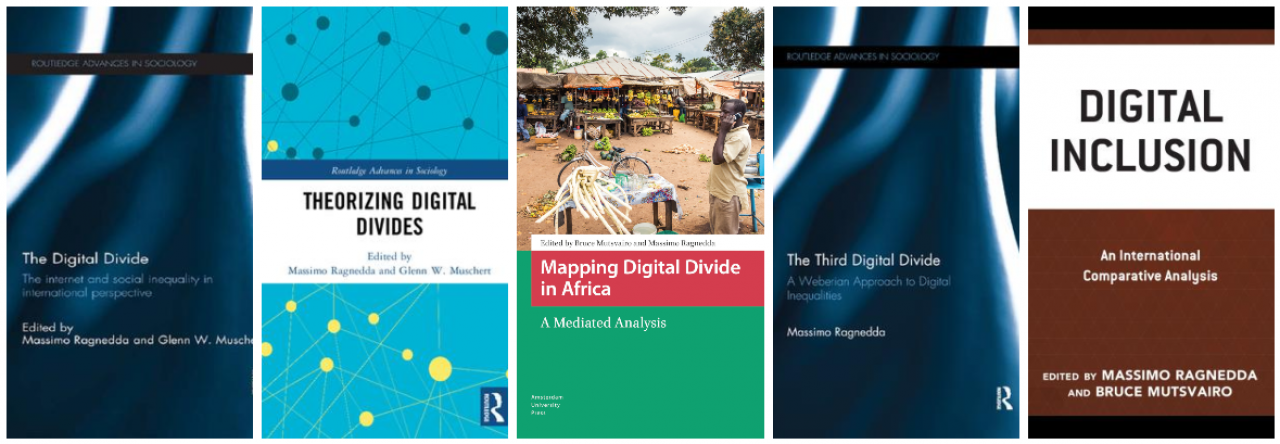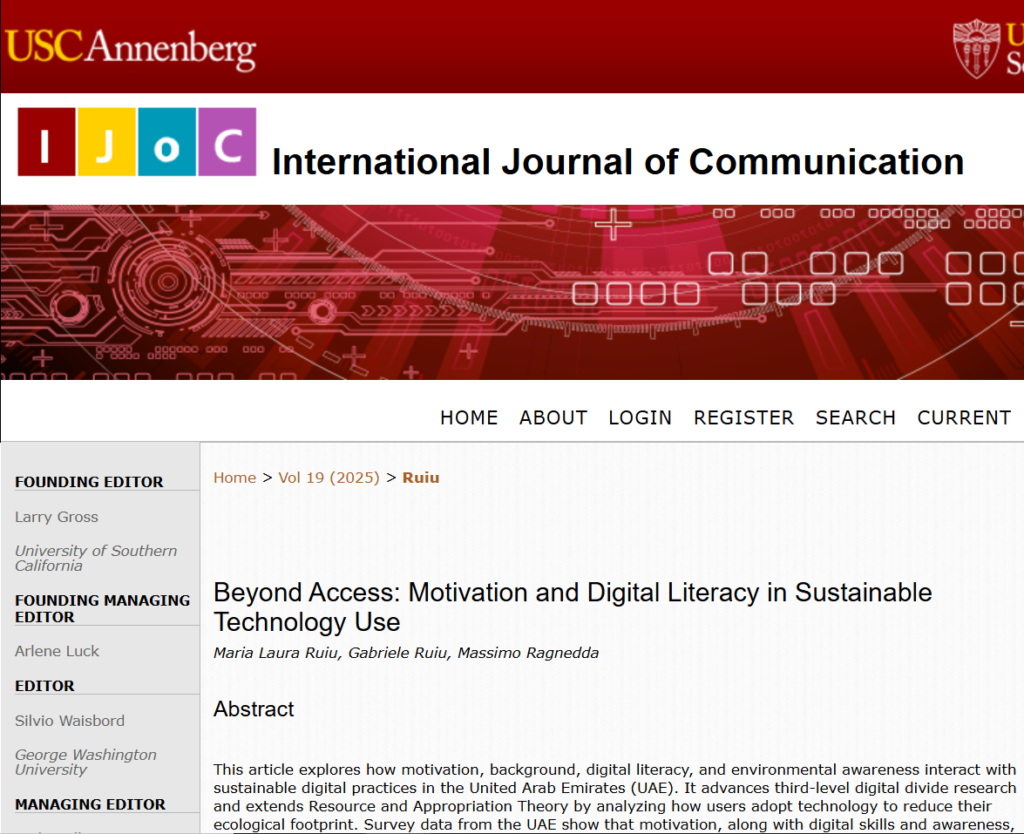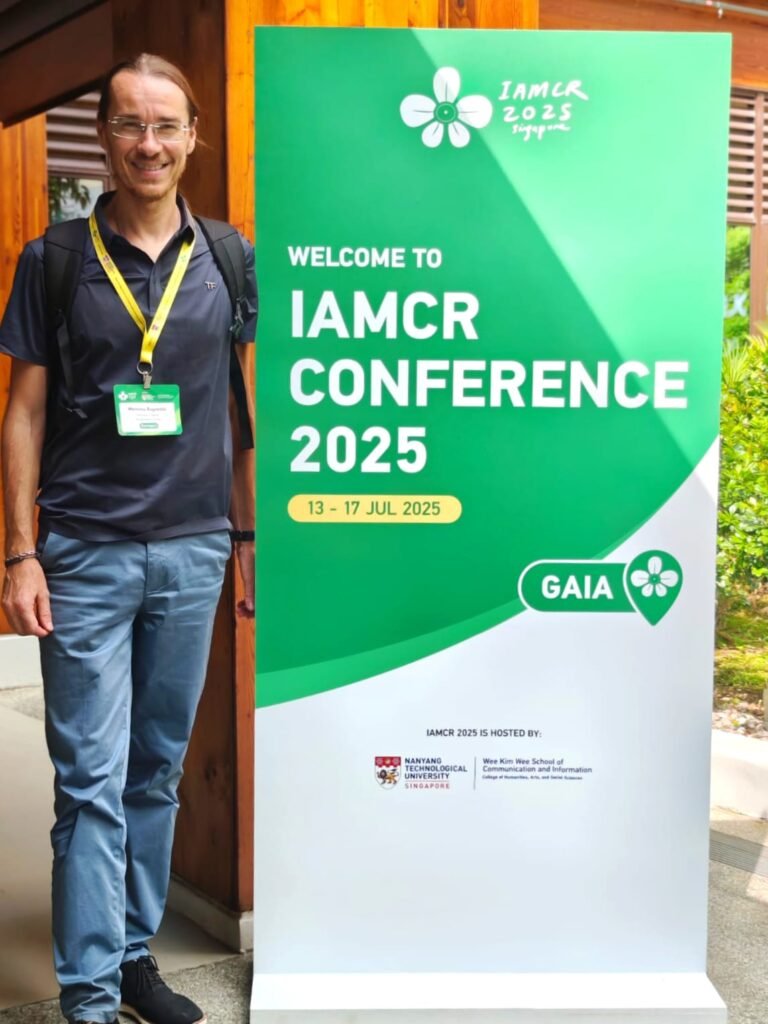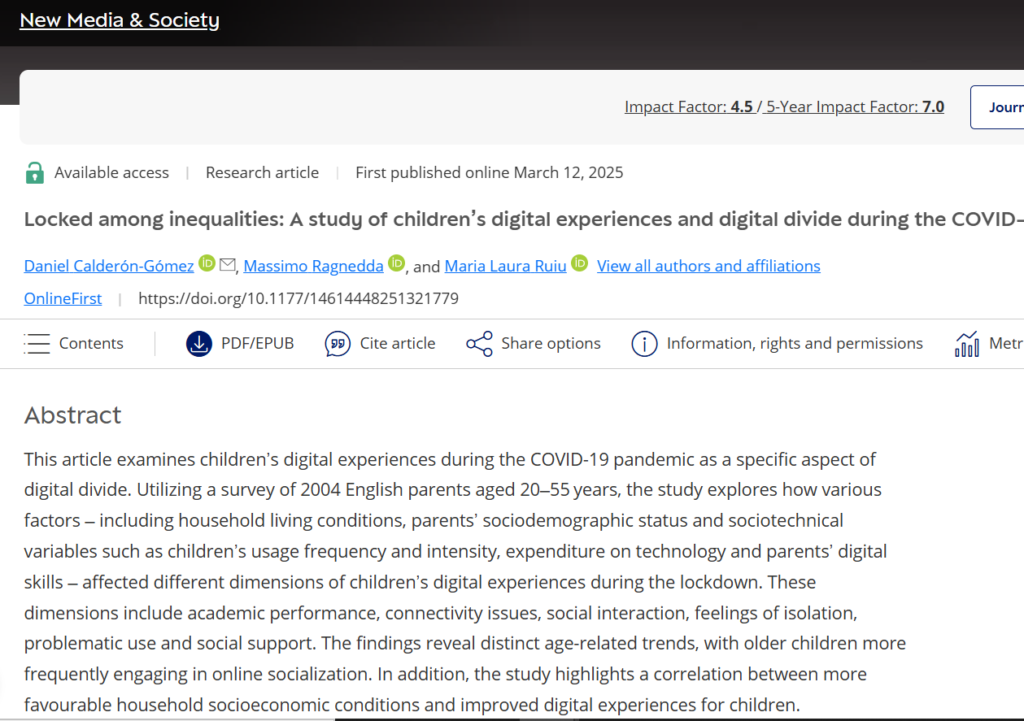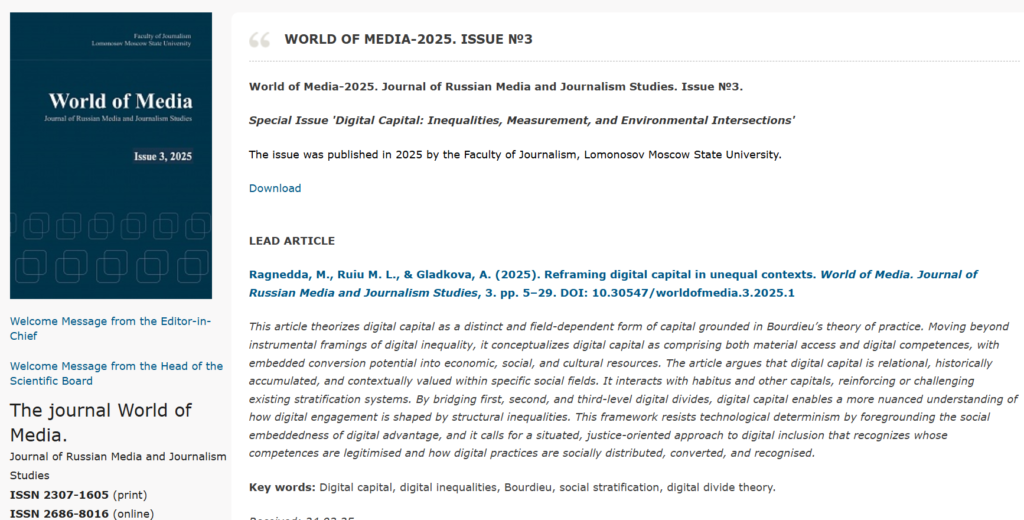
A new special issue of World of Media. Journal of Russian Media and Journalism Studies, co-edited by Massimo Ragnedda and Maira Laura Ruiu, brings together theoretical, methodological, and empirical contributions on digital capital. The issue explores its conceptual foundations, strategies for measurement, and intersections with questions of inequality and sustainability
Lead Article
“Reframing digital capital in unequal contexts” (Ragnedda, Ruiu & Gladkova) reconceptualises digital capital as a distinct and field-dependent form of capital grounded in Bourdieu’s theory of practice. It demonstrates how digital capital interacts with habitus and other forms of capital, contributing to the reproduction of stratification while also offering potential to bridge the first, second, and third-level digital divides.
Measurement and Comparative Approaches
“A shorter scale for measuring digital capital” (Ragnedda, Addeo & Ruiu) presents a concise 9-item Digital Capital Scale, validated across Italy, Germany, France, and Denmark. Maintaining theoretical solidity, this abbreviated scale provides a reliable tool for comparative surveys, policy evaluation, and large-scale research on digital inequalities.
Case Study: United Arab Emirates
“Digital capital as access and competence: A national-level study of the UAE” (Muschert & Shomotova) investigates how demographic and socioeconomic factors shape access and competencies in the UAE. Findings underline the continuing importance of income, education, and age, while revealing the absence of gender-based disparities in this specific context.
Digital–Environmental Intersections
“The nexus of digital–environmental habitus” (Posner) examines the interplay of digital and environmental capitals in higher education. Based on student interviews in the UK, the study shows how institutional priorities and curricular design influence the conversion of digital resources into environmental awareness, highlighting both reinforcing and eroding effects on sustainability-oriented practices.
Symposium and Discussion
The articles included in this special issue were initially presented and debated at the Research Symposium on Digital Capital, held in April at the University of Sharjah. The symposium facilitated an exchange of perspectives across disciplines and regions, which has been further developed in this publication.
Significance
The special issue advances the study of digital capital by refining its theoretical foundations, providing innovative tools for measurement, and analysing its expression in diverse socio-economic and cultural contexts. It also extends the debate to the emerging intersection between digital and environmental capitals, pointing towards new directions for research on sustainability and inequality.
Full issue available here
